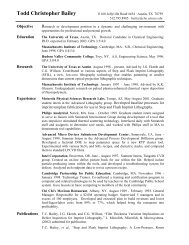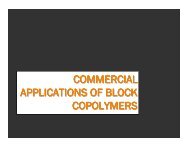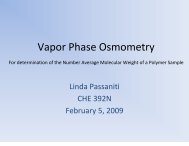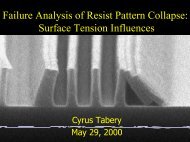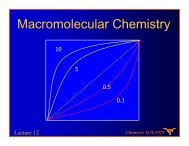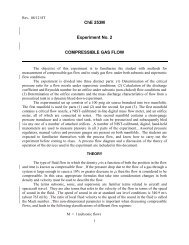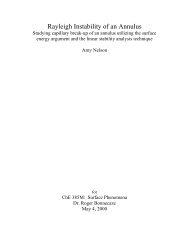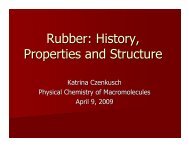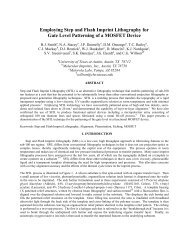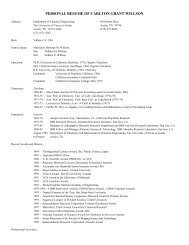Asymmetric fluid-structure dynamics in nanoscale imprint lithography
Asymmetric fluid-structure dynamics in nanoscale imprint lithography
Asymmetric fluid-structure dynamics in nanoscale imprint lithography
- No tags were found...
Create successful ePaper yourself
Turn your PDF publications into a flip-book with our unique Google optimized e-Paper software.
65actuator height, micron432100 0.1 0.2 0.3 0.4 0.5 0.6 0.7 0.8 0.9 1time, sFigure 5.5 Ideal s-curve (solid l<strong>in</strong>e) and actual encoder data (squares)Figure 5.5 show the ideal s-curve and the actual encoder data dur<strong>in</strong>gsqueez<strong>in</strong>g process. The encoder data was averaged from 10 sets of data with bothair and water as <strong>fluid</strong>. The 5 th order polynomial ideal s-curve <strong>in</strong> this case is5 4 3() t = −30t+ 75t− 50t+ 5z Awhere z A is <strong>in</strong> microns. To achieve this outputfrom the actuators, <strong>in</strong>puts <strong>in</strong>to the s-curve profile generator for the C-842 motorcontroller were: velocity = 0.05 mm/s, acceleration = 0.015 mm/s 2 , and jerk =0.025 mm/s 2 . PID terms were 300, 50, and 1200, respectively. The PIDparameters were determ<strong>in</strong>ed through experimental tun<strong>in</strong>g us<strong>in</strong>g data from themotor encoders.5.3 NUMERICAL METHOD5.3.1 Fourth Order Accurate Runge-Kutta with Adaptive Time StepThe fourth order Runge-Kutta method was used to obta<strong>in</strong> the solutions tothe equations of motion, which are <strong>in</strong>itial value ord<strong>in</strong>ary differential equations66



